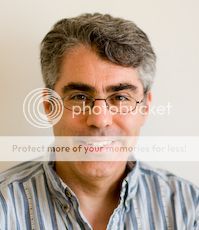I am just (literally minutes ago) back from NCTE and ALAN, which were amazing and inspiring, and I promise to post lots of pictures once I find my camera and sleep a bit. But this post absolutely could not wait…because it’s about Fibonacci. And as of midnight, today is 11/23 (1 1 2 3) — an official Fibonacci day! If you’re confused, read on…
My main character in SUGAR AND ICE (coming Dec. 7, 2010) is a math lover as well as a figure skater, and she’s working on a project on Fibonacci numbers in nature and life. They fascinate her. They fascinate me, too (coincidentally enough), and they also fascinate Greg Pincus, a social media guy and author who has a Fibonacci book coming out with Arthur A. Levine Books down the road. Greg thought it might be fun for us to visit one another’s blogs and chat a little about Fibonacci. Why today? Here’s the explanation of Fibonacci numbers Claire gives her friend Tasanee in SUGAR AND ICE.
"Fibonacci. He was an old math guy who wrote about this sequence of numbers." Claire pulled a notebook out of her bag and flipped to her first page of notes. "Look."
0, 1, 1, 2, 3, 5, 8, 13, 21, 34, 55, 89, 144, 233, 377…
"You start with zero and one, and then each number in the sequence is the sum of the two numbers before it. So zero plus one is one. Then one plus one is two. Two plus three is five. Then eight. Then twenty one. And so on."
(Claire goes on to explain that these numbers have special properties when you add them, and that they show up in nature and art.)
See why 11-23 was a good day for Greg and I to talk Fibonacci? I’ll let him pick up the story now…
 I’ve always loved numbers and patterns much more than I loved hardcore, computational math, so when I first encountered the Fibonacci sequence in school, it stuck with me. It’s not that I used the sequence in my day-to-day student life, but for me there was an elegance… a simplicity… dare I say a poetry in the way the numbers worked together.
I’ve always loved numbers and patterns much more than I loved hardcore, computational math, so when I first encountered the Fibonacci sequence in school, it stuck with me. It’s not that I used the sequence in my day-to-day student life, but for me there was an elegance… a simplicity… dare I say a poetry in the way the numbers worked together.
The Fibonacci sequence rarely factored into my adult life or my writing career as a screenwriter/poet either. But I never forget about it… and a few years back I had what I’d call a Reese’s moment: I combined the sequence with poetry and thought they tasted great together.
Many people had made that combo before me, I know, but I ended up focusing on a simple combination of the two: six line poems where the syllable count follows the Fibonacci sequence (lines of 1, 1, 2, 3, 5, and 8 syllables for a total of 20 syllable poems). I called the poems Fibs and would often begin my writing day by creating a few.
The form is definitely not easy, but the restrictions helped me focus on the importance of word choice. Eventually, I decided to share the admittedly geeky form with folks via my blog (http://gottabook.blogspot.com/2006/04/fib.html) to celebrate National Poetry Month. I invited others to create Fibs… and something entirely unexpected happened.
It turns out that the Fibonacci sequence and the golden ratio derived from it have stuck in a lot of people’s heads. Some people use Fibonacci often: musicians, actuaries, stock traders, and knitters among them. A lot of other people enjoyed mixing poetry with something else that sparked them. Fibs spread far and wide and fast.
Within two weeks of my original post, nearly 1,000 poems had been left in the comments of my blog, hundreds and hundreds of people worldwide were writing Fibs and posting them on their own sites, and the story of the viral spread of this odd poetic form had landed me in the New York Times (http://www.nytimes.com/2006/04/14/books/14fibo.html).
A second unexpected thing happened, too: in large part because of the excitement, I got a book deal. I’m currently working on a novel – a novel!!!! – called The 14 Fabulous Fibs of Gregory K. for Arthur A. Levine Books (an imprint of Scholastic) that includes Fibonacci, Fibs, and much more.
Despite my own excitement when I first discovered the sequence, I had never realized that if you look around, Fibonacci is everywhere. Not just visible in nature or in, say, the Twitter design (http://mashable.com/2010/09/29/new-twitter-golden-ratio/) but invisibly lurking somewhere in the back of a whole slew of brains, planted there by a teacher or a book or a random encounter with the sequence. And frankly, I think that’s poetic, too.
Isn’t that awesome? I love Greg’s enthusiasm for this topic & can’t wait for his 14 FABULOUS FIBS book!
If you want to chat more about Fibonacci numbers (and read a short related excerpt of SUGAR AND ICE) head on over to Greg’s blog, GottaBook, later on for my guest post there.




